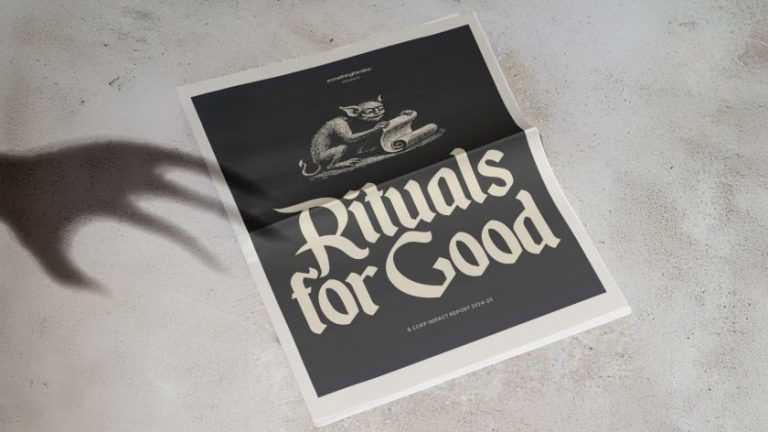Following the runaway success of Wordle and Connections, The New York Times Games team has unveiled a tactile, domino-based puzzle that blends clarity, colour and clever design thinking.
When The New York Times Games drops a new puzzle, it’s always going to turn heads. From the daily Crossword to viral phenomenon Wordle, the portfolio has become something of a cultural fixture.
Now, the team has unveiled its first-ever original logic puzzle, Pips, which recently launched after a quiet beta period.
Pips asks players to arrange dominoes on a board to satisfy a set of conditions. The appeal lies in pattern recognition and the simple satisfaction of snapping each piece into place. Early reviews from the puzzle community have been glowing, with one Reddit user calling it “a brilliant fusion of classic gaming elements and modern puzzle design”.
Pips didn’t begin as a polished product but as a side project. Puzzle editor Ian Livengood explains that it was “born out of a Game Jam – a quasi ‘hackathon’ for games – where potential games are pitched and tested”.
Senior game designer Heidi Erwin adds that the inspiration was as low-tech as it gets: “We have a cart of prototyping materials that contains dominoes, and I felt inspired to experiment with what a domino logic puzzle could look like. Early puzzles were tested with physical dominoes on paper!”
The New York Times has long sought to diversify its gaming line-up, with Ian noting: “We want a well-rounded portfolio: word games, logic games, games like Wordle you finish quickly, and games like Spelling Bee, which solvers work on throughout the day.
“Since the Crossword and Connections are word games, there was a strong desire to complement our other offerings with a visual logic puzzle like Pips.”
The addition also seeks to broaden the audience. “As a logic game, Pips appeals to non-native English speakers, an audience we’re excited to reach,” Ian says.
One of the most intriguing challenges for the team was how to communicate the rules of Pips without overwhelming first-time players. While the game’s mechanics are straightforward, conveying them cleanly was anything but, according to Heidi.
She explains: “Our UI/UX Designer, Tati Moniz, led the visual work for this game. There was a surprising amount of information to communicate with limited space, and she tried many variants before landing on the designs we see today. The team’s priority was clarity.”
The final look strikes a balance between The Times’ signature restraint and something more playful. “Tati landed on something that feels direct, clean, and effective in a Timesian way, yet playful and colourful—she brought some of herself to the game, too, in the best way,” Heidi says.
The beta phase for Pips didn’t alter its core concept, but it did highlight how important clear signposting would be. For the first time, The Times introduced an interactive “How to Play” section.
Ian says, “Showing solvers the different region conditions and how to tap and rotate tiles is easier and more intuitive than telling solvers what to do.”
The approach speaks to The Times’ wider philosophy, too. “Like our other games, Pips doesn’t overwhelm the senses with fussy gimmicks or graphics,” Ian adds. “It’s always a priority to deliver something clean and elegant, while still communicating the rules.”
Many creatives will appreciate that making a screen-based game feel tangible is no small task. To achieve this, the team leaned on subtle choices, from piece shapes to audio design.
“One thing that wasn’t a requirement for launch but ended up making a big difference was sound,” Heidi reveals. “Our software engineer, Devin Lizardi, created and implemented sound effects for the game using physical pieces in the real world.”
As for the pieces themselves, keeping them classic was key. “We also explored some piece size variants (like Tetris-shaped pieces or 1-by-1 squares), and ultimately found that the classic 2-by-1 domino being a known piece helped ground it in the real world,” she says.
Community feedback has been a central part of Pips’ journey. Every Times game passes through a panel of testers, and their feedback helps refine details such as puzzle difficulty and how conditions are explained.
“One thing we saw from the puzzle community was repeated confusion about the region conditions, so we added a reference modal in the ‘How to Play’ section,” Ian says.
External input, even from unofficial channels, also made a difference. “Our team was really encouraged by the positive feedback on Reddit, too,” Heidi notes. “It’s not official research, but it helped remind us that we were working on something that players were excited about.”
Pips’ design ethos draws from both classic puzzles and contemporary game design. Heidi explains, “We design Pips puzzles to give people anchors when solving.
“There is always a next logical step players can take when placing pieces –you don’t have to make guesses.”
That sense of steady progression is what makes the game accessible, but it also connects to The Times’ design philosophy of creating puzzles that feel grounded. “Our team tends to like when digital games feel like they could exist in the real world on paper or as an object you can hold,” Heidi adds.
While the launch version of Pips is relatively streamlined, the team sees plenty of scope for evolution. “I’d love to see as much variety as possible in future Pips puzzles,” Heidi says. “I also hope the team continues to challenge players – it’s exciting to present players with a high bar to strive for, and players continue to rise to the challenge.
That ambition fits neatly with the Games portfolio’s reputation for difficulty. “NYT Games are known for being tricky,” she says. “I feel that in the best world, Pips will offer players similar trickiness, not in the word space but in the logic puzzle space.”










